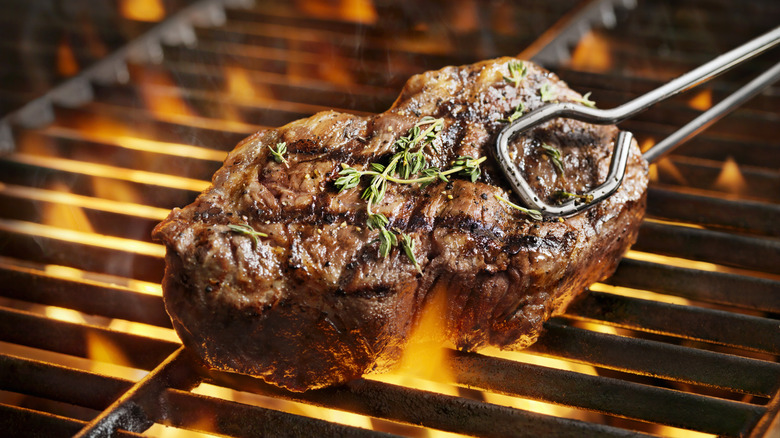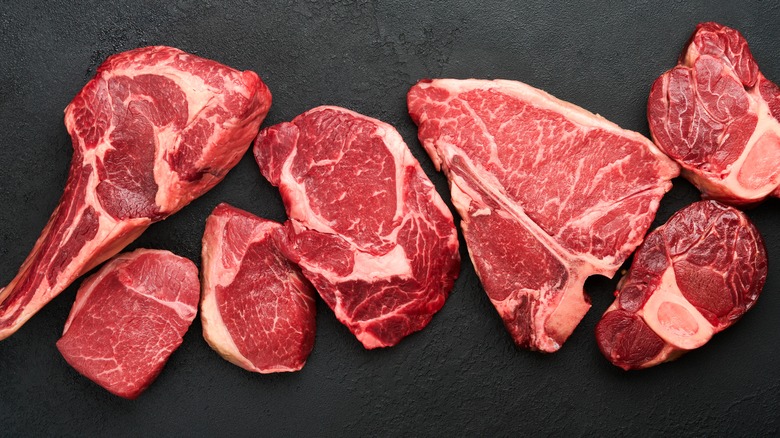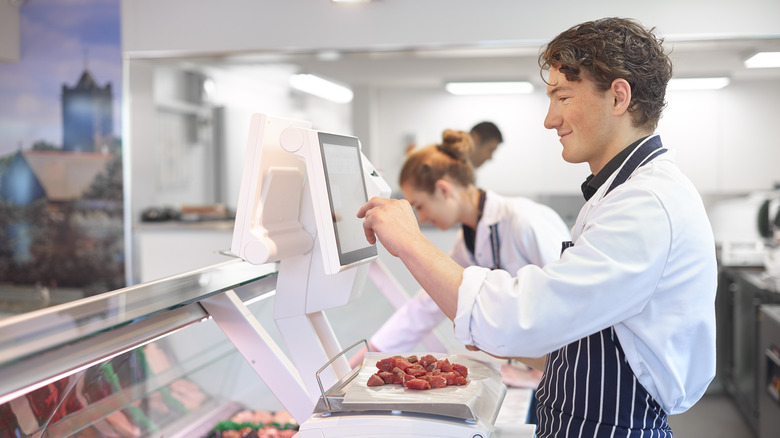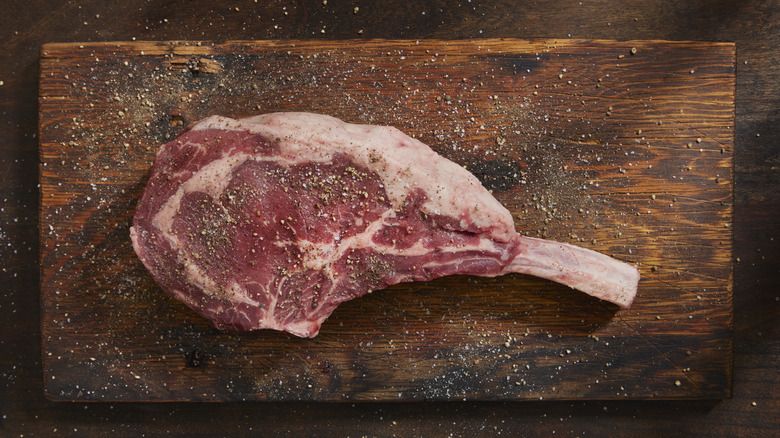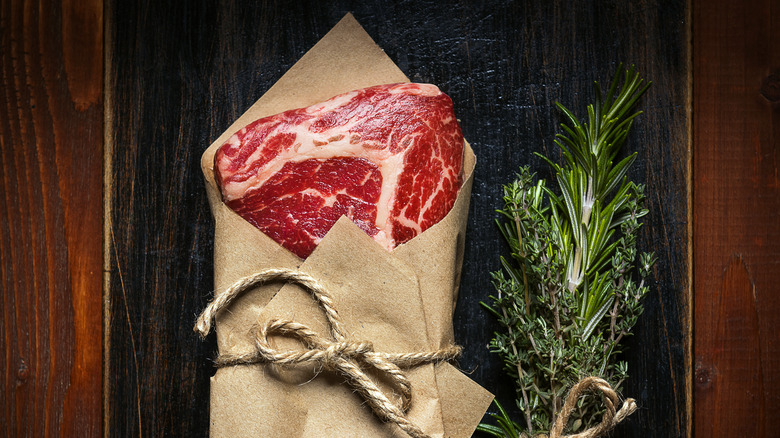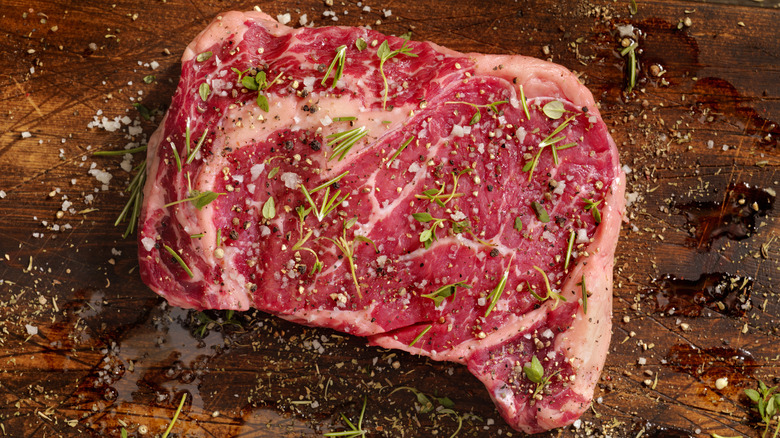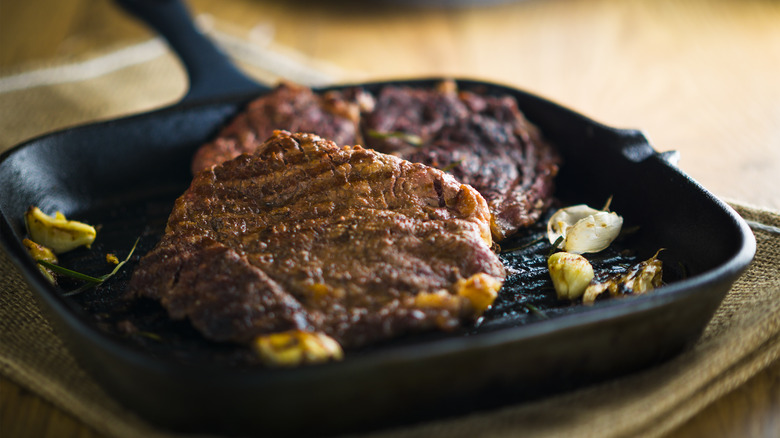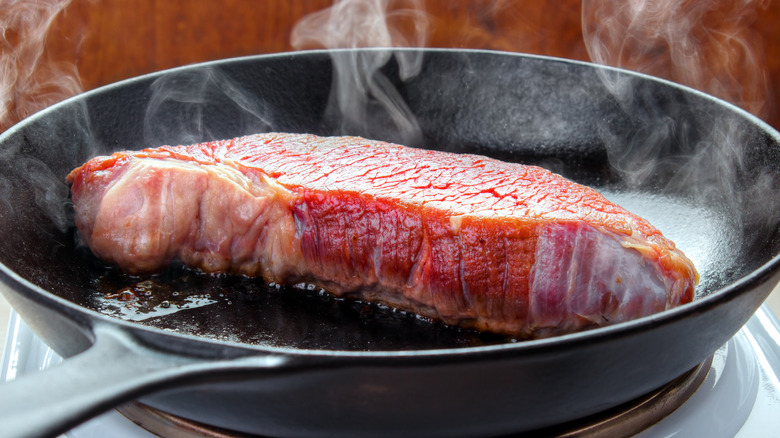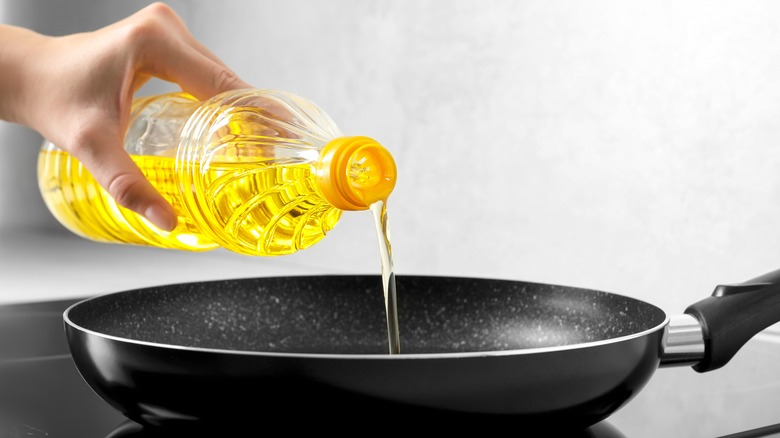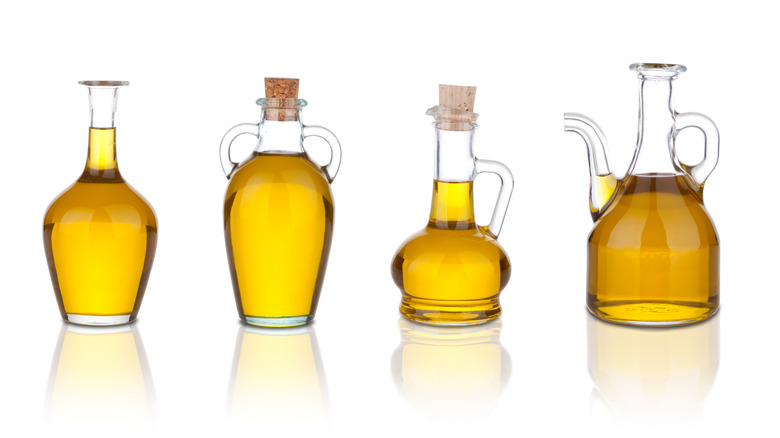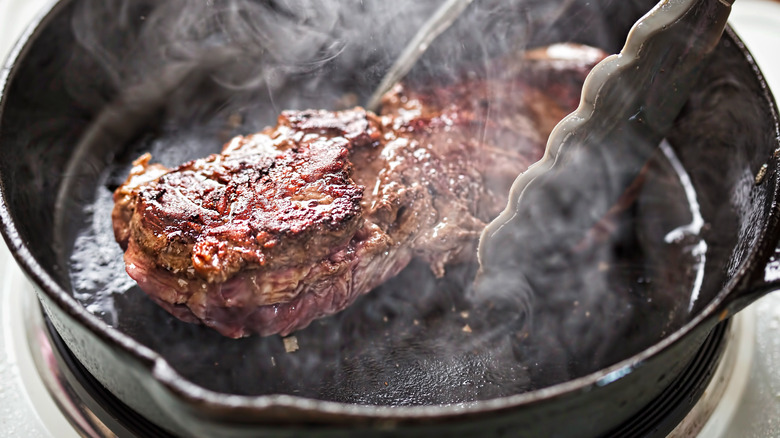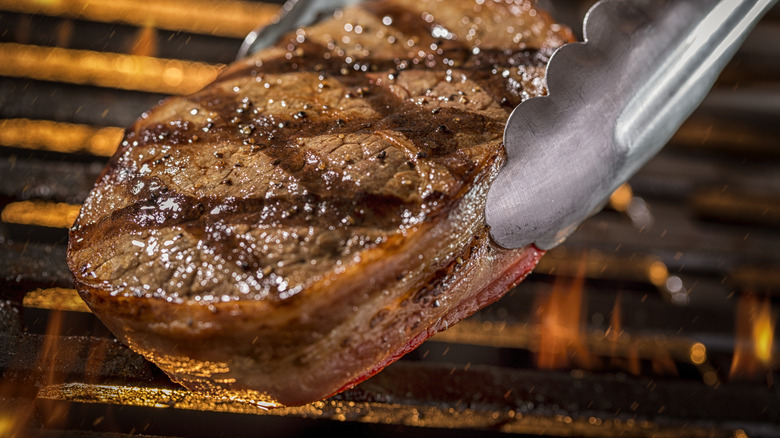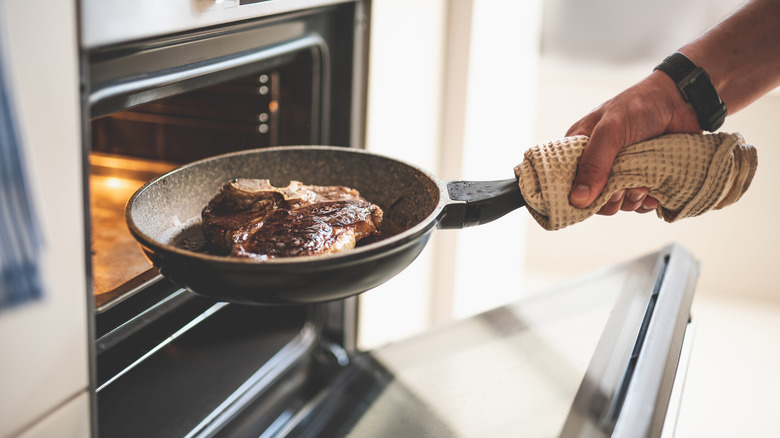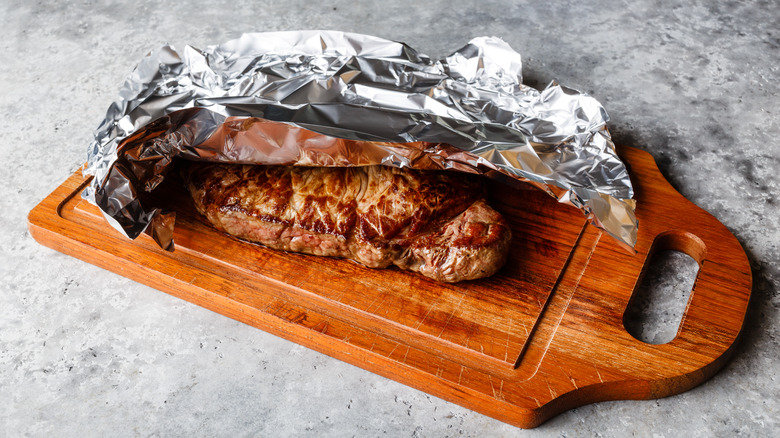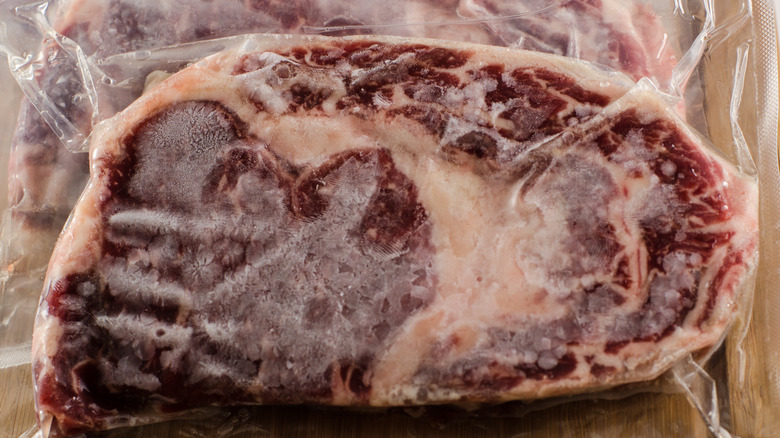14 Mistakes You Should Avoid While Cooking Steak
In the culinary world, few accomplishments rival the satisfaction of a perfectly cooked steak. The sizzle, the aroma, and the tantalizing promise of a flavorful experience make it a pursuit worth embracing. However, while getting steak right is simpler than you might think, there are still a number of easily avoidable errors that can set you back and ruin a wonderful piece of beef.
Whether you're a seasoned steak enthusiast or taking your first steps in the kitchen, knowing these pitfalls should give you a deeper understanding of the steak-cooking process as a whole. From selecting the right cut to mastering cooking techniques, there are plenty of factors that might influence your steak's outcome.
Below, we're going to take a closer look at some of these common mistakes, explain how and why they're so important to avoid, and give you some tips and tricks to guarantee you're making the most of your meat and getting great steak every single time.
Using the wrong cut of meat
One of the most common mistakes folks make when preparing steak occurs before the beef even hits the pan. It doesn't matter how skilled you are in the kitchen — if you choose the wrong cut of meat for the job, you're going to fall far short of perfection.
Some cuts of meat just aren't suitable for frying or grilling because they're too tough, especially those taken from parts of the cow with dense muscle. Round or flank steaks are perfect for roasting, slow-cooking, or braising, but you're going to give yourself a jaw workout if you try cooking them in a pan.
If you're willing to spend a bit extra on premium steak, you want to go for a ribeye marbled with flavorsome fat, a thick porterhouse, or a melt-in-your-mouth cut from the tenderloin. If you're on a budget but still crave high-quality steak, top sirloin is a cheaper option that still packs plenty of flavor. It will still turn out nice and tender if you don't overcook it.
Buying your steak from the supermarket
If you're serious about cooking the perfect steak, then it's time to take that supermarket beef out of your cart, pop it back on the shelf, and head to your nearest butcher. That's not to say that all supermarket steaks are terrible, but the advantages of sourcing your meat from an independent specialist are too numerous to ignore.
While supermarket steaks are almost certainly going to be cheaper, you're sacrificing quality and choice by opting to buy from somewhere focused on mass production. Not only are butcher's steaks most likely going to be much fresher and better tasting but you'll be able to find out far more information about where the beef has been sourced. This can include details about how and where the cow was raised — often locally on a more nutritious diet — as well as which cut to choose based on your taste preferences.
At a local butcher, you'll often see them cut your meat fresh in front of your eyes. When it comes to supermarket steak, it's hard to tell just how long ago the cow was butchered, or whether the meat has been altered with chemicals to preserve its appearance and freshness.
Not letting your steak reach room temperature
To this day, people still argue whether it's necessary to let your steak rest outside of the refrigerator before cooking. While there are some cases where it may not be necessary, the reasoning for letting your steak get up to room temperature first is pretty sound.
If you're cooking steak in a pan or on the grill, the outside of the steak is going to start reaching optimal temperatures before the inside. This means you might end up with a perfect crust but a cold center, or a hot center and a burnt crust. Aside from being a less enjoyable eating experience, an uneven cook will affect how tender your steak is and might cause your steak to dry out and shrink more than if you'd let the steak rest first.
There are two main exceptions to this rule. If you dry brine your steak in salt, you can add it to the pan straight out of the fridge. If you're planning on finishing the steak off in the oven, you can also skip bringing it to room temperature.
Not drying your steak
One of the key signs of a well-cooked steak is a beautiful, brown outer crust of caramelized meat, thanks to something called the Maillard reaction. However, this tasty chemical reaction only occurs when the outside of the meat hits somewhere between 280° to 330° Fahrenheit.
If the surface of your raw steak is too moist, the water — which boils at 212° Fahrenheit — will prevent the surface of the meat from getting hot enough for the Maillard reaction to occur. So, while the inside of your steak may be cooked properly, the outside will be a dull, lifeless affair. Plus, if you're judging your steak's doneness by its surface color, it's easy to overcook it while struggling for that ideal crust.
Fortunately, this issue is easily solvable with the help of a quality paper towel. However you decide to cook your steak — in the pan, on the grill, or in the oven — simply give it a good pat dry beforehand to remove the excess moisture.
Not seasoning properly
Seasoning steak can be a delicate balancing act. For high-quality cuts of meat, you want to complement the flavor of the beef without drowning it out; however, you'll be doing your steak a disservice if you don't season it enough.
If you only add two seasonings to your steak, make them salt and pepper. However, you want to go for kosher salt and cracked black pepper; avoid iodized table salt and pre-ground pepper completely. Coat both sides of the steak with salt an hour or two before you plan to cook it as this soaks up excess moisture and helps the meat reabsorb its tasty juices. If you add the pepper at the same time as the salt, it'll become a little astringent and bitter while the meat cooks, so if you're after its lighter flavors, it's best to add it at the end.
If you really want to boost your steak's flavor, at the end of the cooking time, baste the meat in butter, garlic, and a herb that pairs well with beef, such as thyme, rosemary, or oregano. Add a little bit of flakey salt before resting and your steak should be seasoned to perfection.
Using a non-stick pan
While it is possible to cook steak in a non-stick frying pan, we don't recommend it if you're after a superb steak. To get a beautiful crust on your meat, or to oven-cook thicker cuts of beef, you need high temperatures, something non-stick pans just aren't equipped for.
Most recommendations around modern non-stick frying pans suggest a maximum temperature of around 500° Fahrenheit. So, while you should be able to use one to get a crust on your steak, you do run the risk of damaging the pan's coating. If you want to use the oven to cook your steak, you're looking at needing around 450° for bigger cuts, which is a little too close to the maximum tolerance.
Although there isn't a general consensus on how harmful non-stick pans might be to human health, the risk of inhaling toxic fumes increases if they get too hot (per Web MD). The best pans for cooking steak are cast iron skillets — they're great at retaining high heat, have a rough surface for creating a beautiful sear, and can be transferred to the oven straight from the stovetop.
Not pre-heating the pan for long enough
As important as it is that your pan and oven can hit high temperatures, forgetting to preheat either of them first is a shortcut that will only lead to disappointment. If you skip preheating to save time, you're denying your meat the opportunity to cook evenly and develop the best flavors and textures.
When your pan or oven starts off too cold, the outside of the steak will heat up at a much faster rate than the inside, once again putting it at risk of a charred crust or being undercooked in the middle. Not everybody likes their steak raw, and even fewer want it burned to a crisp.
A pan that's hot enough when the meat hits it is going to create the best possible sear, something that will lock in the juices and caramelize nicely. At the same time, preheating your oven creates the ideal cooking environment for roasting and baking.
Putting oil in the pan
Another common steak mistake is adding your oil to the pan while it's heating up — if you're doing this, you're probably using too much oil in the first place. Oil is an important ingredient for cooking steak as it helps create a nice sear by reaching temperatures that help promote the Maillard process; however, it's pretty easy to overdo it and ruin a good cut of meat.
First, too much oil will stop your meat from heating up as quickly, and will likely result in a greasy steak. The other issue is that at high temperatures, you're more likely to get burns if the oil starts spitting.
The trick is to use no more than 1-2 teaspoons of oil depending on the size of your steak, and brush or rub it onto the sides of your steak to guarantee an even coating. You want just enough oil to help the seasonings stick to the meat, prevent the meat from sticking to the bottom of the pan, and to create a caramel-colored crust.
Using the wrong oil
It might seem fairly obvious that different oils work better with different recipes, but there's more to oil varieties than their flavors. Oils all have varying "smoke points" — that is, temperatures at which the oil starts to smoke and break down.
If your oil has a smoke point lower than the ideal cooking temperature of your ingredients, you might end up with bitter and burnt flavors. As the fat breaks down, it releases free radicals that can be harmful to your health, according to Masterclass. We already know that cooking steak requires high heat throughout, so it's better to opt for oils with high smoke points.
Vegetable oils like canola, grapeseed, or sunflower oil are arguably the most suitable when it comes to steak. While regular or light olive oils are fine, the smoke point of extra virgin olive oil is too low. Butter has the lowest smoke point of most fats you might consider using to cook steak, which is why it's best to add it very late and baste your steak with it before resting.
You keep moving the steak around the pan
A lot of cooking requires patience, and things are no different when it comes to steak. While you're watching it sizzle away, it can be tempting to grab a fork or a pair of tongs and prod it around the pan.
However, once your steak is in the pan, with its surface undergoing the Maillard reaction to form the perfect crust, you should only move it when it's time to flip it over. Whenever you move the steak around, the heat changes. If you lift it away from the base of the pan, it'll get colder and slow the caramelization process. Moving it from side to side will alter the temperature and possibly cause your steak to cook unevenly.
You should leave your steak still for around 3–4 minutes, checking the edges to see whether the crust has formed properly. If you're pretty certain it's ready to flip based on the color and texture, give it a quick check. If it's ready, turn it over; if not, leave it for another couple of minutes.
Only flipping the steak once on the grill
While you want to be leaving your steak well alone if you're cooking it in the pan, it's a slightly different story when it comes to grilling. A grill doesn't provide direct heat the same way a pan does, so there's a chance you might not actually be moving your meat enough.
When grilling steak, it's not uncommon to find a gorgeous crust on one side with a lackluster result on the other. However, this can usually be fixed by flipping the steak at regular intervals, somewhere between every 30–60 seconds. By turning it over more often, you're not giving the steak's upwards-facing side too much time to cool before it gets another go on the hot grill.
Flipping your steak more frequently also replicates the effect of cooking both sides at once, leading to shorter cooking times. The only drawback of continually flipping your steak on the grill is that you may struggle to get picture-perfect grill lines along the meat, but considering these are mostly cosmetic, it's a small price to pay.
Not finishing off your steak in the oven
Cooking steak in a way that guarantees it's perfect on both the inside and the outside requires careful temperature management. For thicker cuts especially, it can be a challenge to ensure that the inside has reached the right temperature throughout.
A little trick used by many restaurants is to only use a pan for searing the steak and achieving the right amount of crust. Once it's been properly seared, you can baste your steak then transfer the pan — assuming it's a completely cast iron or stainless steel one — directly into your oven, preheated to around 450° Fahrenheit. This will stop the searing process and start heating up the inside of the meat without overdoing the outside.
Lastly, remember that you'll need to adjust your cooking time depending on how well done you want your steak; cuts less than an inch thick run the risk of being overdone using this method, so it's probably best to stick to the pan-only approach for thinner pieces of meat.
Not letting it rest before serving
When your perfectly cooked steak comes off the grill or out of the oven, it's tempting to serve it up right away and dive straight in. However, letting the meat rest before you tuck in is a crucial step if you really want to experience your meal to the fullest.
When you're cooking your steak under high heat, the liquid juices inside retreat toward the center of the piece of meat. If you were to cut into your steak immediately, all these succulent juices are going to come pouring out and go wasted in a puddle on your plate.
By letting the meat rest, it gives the surface time to cool and allows the juices to re-permeate every part of the steak. Now, when you cut into the steak, you'll be getting those rich juices with every mouthful. While guidance on how long to rest steak varies slightly, a common rule is one minute of rest per 100 grams of steak, which works out to around five minutes of resting for a 14–16 ounce steak.
Thawing frozen steaks
While it would be great if every steak we ever ate was cut fresh that day, there may come a time when you have more than you need and want to save it for another time. Now, there's nothing inherently wrong with freezing raw steaks for use at a later date, as they can still be cooked to an extremely high quality. But, there's still one major pitfall when it comes to frozen steaks.
Defrosting your raw steak before cooking it sounds like a perfectly reasonable thing to do. However, this actually leads to more moisture loss and eventually, a drier, less-juicy steak. If you cook directly from frozen, you're going to lose less of those precious juices.
You're also going to get a more even cook throughout the meat if the whole thing is a uniform temperature (even if that temperature is around 0° Fahrenheit) which will help you avoid getting an unsightly gray band around the inside edge of the steak. You shouldn't have to change your cooking technique too much if you're cooking from frozen. You may want to use a little more oil to get into any folds in the meat that might have appeared due to the freezing. This will also give you more of a heat reserve. You might want to start cooking the frozen steak at a lower temperature so that you warm the inside up more slowly before cranking up the heat for the ideal sear.

